Medical Device Design Services
How Our Clients Have Seen Success
Hear From Our Happy Clients
Hear From Our Happy Clients
Director of R&D
Several Medical Device & Life Sciences Firms
CEO
Katalyst Surgical
Kenneth C. Paulus
Founder & CEO, REACT Holdings & Pelvic Wave
Peter J. Oehlberg
Director, Technical Operations Bracco Diagnostics Inc
Medical Device Design Service Offerings
Streamline your device's journey to market by ensuring all user needs and regulatory requirements are met.
Our leasable pre-existing base platform systems are customizable to match your vision.
Improve user experience with our focus on usability and human factors engineering.
Proactively identify potential device risks while maintaining project timelines and budgets.
Adhere to the highest industry standards with our assistance in developing quality systems.
Develop innovative hardware designs with our advanced circuit and system design expertise.
Secure your medical device software by keeping your design up-to-date with FDA cybersecurity standards.
Prototype effectively using our in-house ISO 14971 standardized rapid 3D prototyping services.
Personalized client experience ensuring a seamless strategic project approach backed by weekly meetings and clear project reporting.
Our Proven 4-Step Process
Planning
This initial program phase is used to identify key requirements necessary to bring your product to market, built upon user needs and intended use. Assessing concepts and demonstrating feasibility of those concepts define how we proceed towards a design that meets your needs.
Design
In this phase, we’ll have formalized product plans, design inputs, system architecture and sub system requirements, ensuring the product meets the many requirements needed for the system and its intended use.
Verification & Validation
During V&V, design verification (DV) medical device prototypes are built and released. Formal testing of design verification and validation, as well as regulatory testing, occurs and is documented to prepare for process validation.
Design Transfer
In this final stage, we complete all activities needed to transfer the Device Master Record (DMR) to manufacturing, culminating in a pilot build of systems. Once complete, broad production can occur.
Our depth of expertise in specific clinical segments is strengthened by our dedicated team, refined processes, and specialized portfolio and proprietary platforms.
Reduce execution risk by working with a medical device design company known for over 1600+ medical devices developed.
Leverage our proprietary platform architecture and reduce development timelines by up to 60%.
Our in-house team of specialized engineers will bring your medical device from concept to reality with precision and care.

Reduce execution risk by partnering with an experienced medical device design company
Start your next medical device project by partnering with a company that has successfully gained approval for over 1,600 medical devices.
Our team of experienced program managers and engineers will develop a project plan for your device following our robust 4 stage development process, providing clear planning, tracking, and execution.
During this process, we will leverage a customized team of in-house quality, regulatory, mechanical, industrial, software, electrical, test and manufacturing engineers to bring your specifications to reality.
Get support you need for all stages of the medical device lifecycle
Whether you’re seeking early stage feasibility confidence, medical device design guidance, manufacturing reliance, or a combination of services, let’s meet and discuss how we can partner to support your medical device program needs.
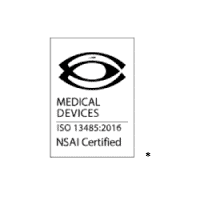

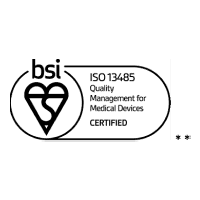

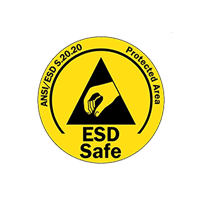

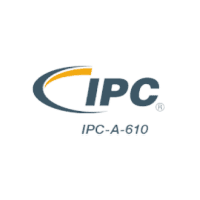
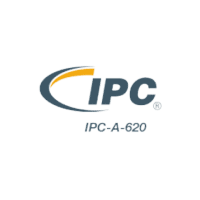




Vantage MedTech is proud to be recognized for our certified excellence in medtech innovation and manufacturing.
* Held by RBC Medical Innovations
** Held by Sterling Medical Devices
Frequently Asked Questions
What Are The Standards For Medical Device Design?
The standards for medical device design include adherence to ISO 13485 for quality management systems, compliance with ISO 14971 for risk management, and meeting specific regulations like the FDA’s Quality System Regulation for medical devices.
These standards guide the design process, from initial concept to final product, focusing on user needs, product performance, and patient safety. Regular audits and reviews to ensure these standards are met throughout the device's lifecycle.
What Factors Need to Be Considered in The Medical Device Design Process?
During the medical device design process, it's important to consider the following factors:
- User and Patient Safety: the device is safe for both users and patients.
- Medical Necessity: the device must meet specific healthcare needs.
- Regulatory Compliance: adherence to relevant regulations.
- Usability: design for ease of use by healthcare professionals and patients.
- Durability and Reliability: the device should be dependable and long-lasting.
- Cost-Effectiveness: balance quality and affordability.
What Are ISO 13485 Requirements?
ISO 13485 sets requirements for a comprehensive quality management system in the design and manufacture of medical devices.
Requirements include:
- Establishing well-defined processes
- Effective risk management
- Maintaining proper documentation
- Implementing strict quality control measures
- Regular internal audits
- Corrective and preventive actions
- Continuous improvement processes
This standard ensures that medical devices are consistently designed, produced, and distributed to meet both regulatory and customer requirements.
What Is The Difference Between ISO 13485 & GMP?
ISO 13485 and GMP (Good Manufacturing Practice) differ in scope and application.
ISO 13485 is an international standard that outlines requirements for a quality management system in the medical device industry. It ensures consistent quality, product safety, and compliance with customer and regulatory requirements.
GMP is enforced by the FDA in the USA. It focuses on the actual production process, including raw materials, staff training, and facility hygiene.
Do Class II Medical Devices Require Design Controls?
Class II medical devices do require design controls. The FDA mandates these controls to ensure that devices meet user needs, intended uses, and specified requirements.
Design controls are a systematic set of practices that manufacturers must follow during the development process. They include defining user needs, establishing design inputs and outputs, verifying that designs meet requirements, validating device effectiveness for intended use, and maintaining comprehensive design documentation.